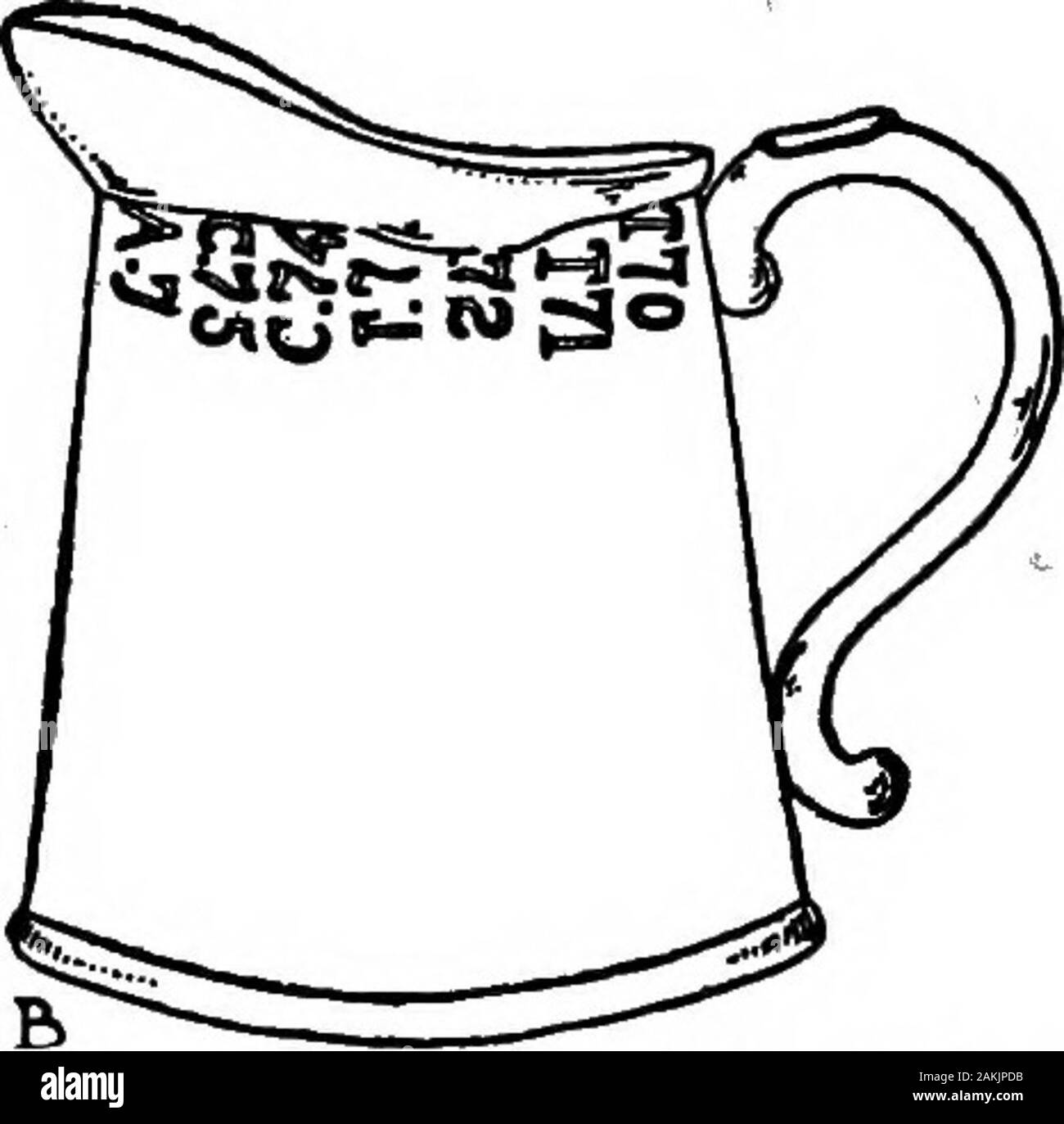The practical book of early American arts and crafts . hooks,point tools, a spear grater, and a spear burnisher. The qualities of pewter employed were designatedby three names: fine pewter, or the best quality, whichconsisted of tin, with the addition of as much brassor copper as the tin could take up. Of this were gen-erally made platters, chargers, and articles that weresquare, ribbed, or fluted. The second quality con-sisted of tin and lead in the ratio of 112: 26 and was 206 EARLY AMERICAN ARTS AND CRAFTS used for articles more or less round in shape. Tliethird quality was called trifle, m

Image details
Contributor:
The Reading Room / Alamy Stock PhotoImage ID:
2AKJPDBFile size:
7.2 MB (154.3 KB Compressed download)Releases:
Model - no | Property - noDo I need a release?Dimensions:
1591 x 1571 px | 26.9 x 26.6 cm | 10.6 x 10.5 inches | 150dpiMore information:
This image is a public domain image, which means either that copyright has expired in the image or the copyright holder has waived their copyright. Alamy charges you a fee for access to the high resolution copy of the image.
This image could have imperfections as it’s either historical or reportage.
The practical book of early American arts and crafts . hooks, point tools, a spear grater, and a spear burnisher. The qualities of pewter employed were designatedby three names: fine pewter, or the best quality, whichconsisted of tin, with the addition of as much brassor copper as the tin could take up. Of this were gen-erally made platters, chargers, and articles that weresquare, ribbed, or fluted. The second quality con-sisted of tin and lead in the ratio of 112: 26 and was 206 EARLY AMERICAN ARTS AND CRAFTS used for articles more or less round in shape. Tliethird quality was called trifle, much used for commontankards and mugs, and was sometimes made withnearly forty per centum of lead. Ley-metal, lea, orlay was common pewter, or pewter below the prescribedstandard of purity. When antimony was used instead of lead, the alloywas harder and more brittle. More than twenty percentum of lead darkened the alloy and produced a bluishtinge. Good Britannia metal, consisting of a high per-centage of tin with a small quantity of antimony and a ft. FxQ. 3. A, Fluid Lamp with single wick. B, Measure, Philadelphia made» earlynineteenth century. Frishmutb Collection, Pennsylvania Museum and School of In-dustrial Art. still smaller quantity of copper, is really pewter ofexcellent quality. The most expensive part of the pewterers outfit andthe most troublesome to make was the set of moulds.The most durable and generally satisfactory were madeof gun-metal. They would last indefinitely, and thereare some still in use after more than a century of ser-vice. They are in good condition, just as are the oldwood blocks made in the seventeenth century for print-ing fabrics, some of which are now being used againfor the stamping of modern linens. Moulds could also EARLY AMERICAN PEWTER 207 be made of plaster of Paris, although they were notvery durable; of lithographic stone or, finally, fashionedin sand. As mentioned, the more elaborate moulds wereoften made in three or four separate piec